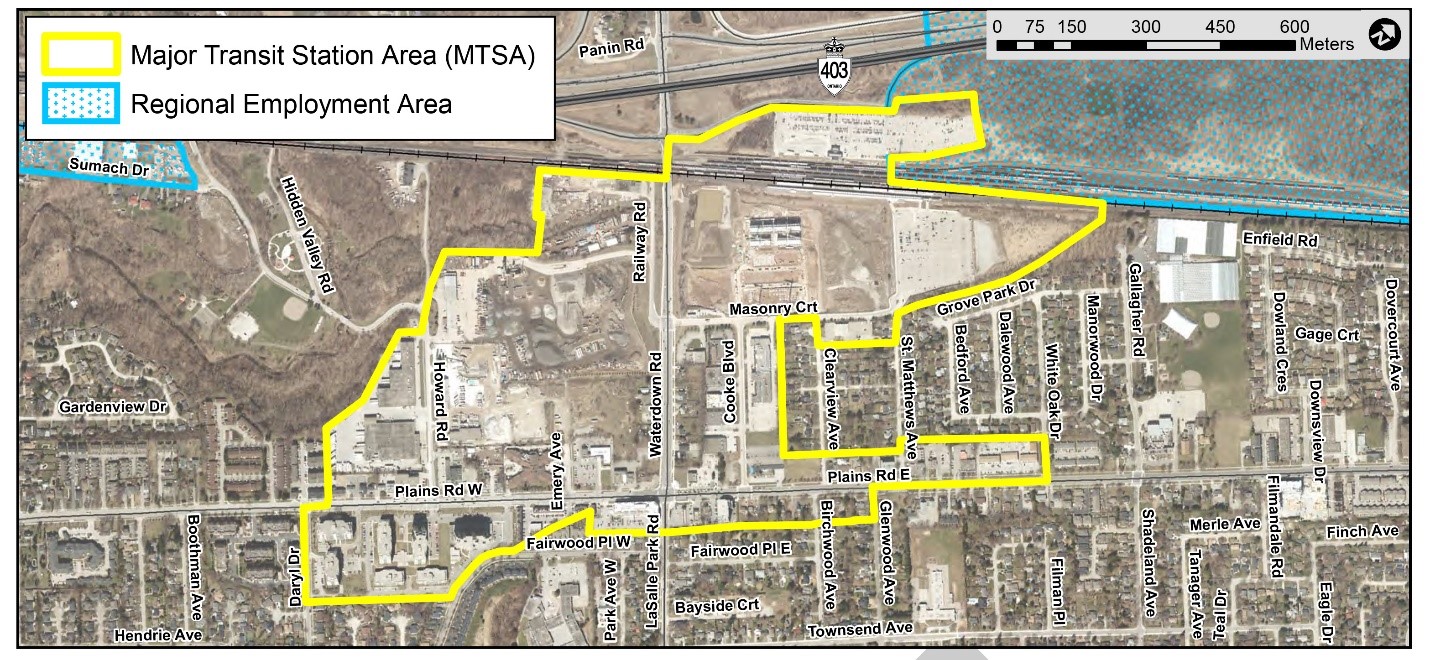The Region of Halton is about to do two things that will support the City of Burlington’s long-term plan for growth and intensification around the Aldershot GO Station.
As part of its new Official Plan (OP), the region is about to enact Amendment 48 (ROPA 48), which sets the foundation for the remaining portions of the OP. ROPA 48 includes non-discretionary items required by the province and defines the urban structure and growth areas for Halton for the next three decades.
As part of its growth plan, the region is confirming the city’s proposed boundary for the Aldershot GO Station area (technically known as a Major Transit Station Area, or MTSA). The boundary generally includes areas up to 800 metres from the GO station or about a ten-minute walk to the trains. The northern boundary is the GO station itself. The western boundary is roughly Daryl Drive. The southern boundary is just south of Plains Road and the eastern boundary is roughly Grove Park Drive, but interestingly, it skirts around the controversial streets of Queen Mary, St Matthews, and Clearview avenues.
The second regional initiative is the conversion of lands currently designated only for industrial purposes and redefining them for mixed-use purposes. This is rare, but it gives planners and developers much more flexibility in designing the MTSA.
Basically, 13 properties are being redesignated, several of which have the same owner. They are: the King Truck Centre, the ADI lands, the former Cupido Trucking site, a location at the very end of Railway Road, and the eastern end of Masonry Court, adjacent to the GO parking lot.

“The proposed conversions have been identified by the City of Burlington as having strategic importance in advancing elements of the local urban structure,” according to a regional report.
The city will resume detailed planning for the GO station MTSA this year. The long-term intensification target for this neighbourhood, still perhaps decades away, is 150 residents and jobs per hectare. Theoretically, this would be composed of 75% residents and 25% jobs.
The region hopes to pass ROPA 48 later this year, but it is first subject to more public consultation. Dates are currently being discussed for a virtual public information centre and a statutory public meeting.




